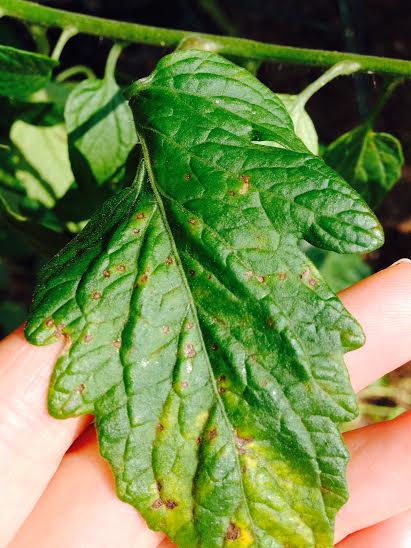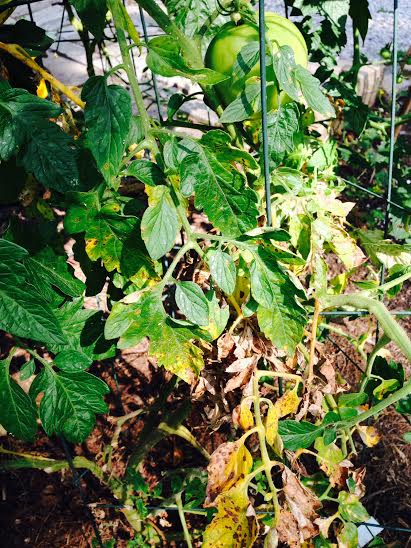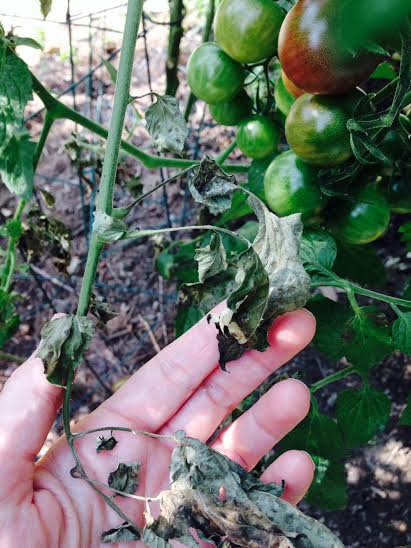Check in weekly, on Wednesdays, to read our new post on gardening, harvesting, and making use of that fine, extra-local produce! We’ll share tips and techniques, gleaned from our urban farms and gardens. Email info@growpittsburgh.org with any topics you’d like us to cover.
Septoria Leaf Spot is a plant disease that can moderately to severely affect tomato plants in the course of a growing season. The disease infects the foliage of the plant and not the fruit. However, production can be affected through increased sunscald (due to less leaf coverage of the fruits) and overall deterioration of the tomato plant.
What Does the Disease Look Like?
Plants with Septoria Leaf Spot have small, grey, circular spots speckling the leaves. The grey spots have a black center, from which spores exit. Lower leaves are more affected than upper leaves, and the disease spreads upward on the plant. The lower leaves of the plant eventually brown completely, shrivel, and die. Early blight, another common tomato disease, also causes the death of lower plant leaves, but appears as large, irregular dark spots with a significant amount of yellowing surrounding them.
How Does the Disease Spread?
Septoria Leaf Spot is a fungus and spreads by spores. As with other fungal disease, it establishes and spreads most rapidly in wet or humid weather. Septoria Leaf Spot attacks plants in the nightshade family, and can be harbored on weeds within this family. Of vegetables in the nightshade family, tomatoes are the most susceptible to infection, though the others can carry the disease.
Septoria Leaf Spot spores can overwinter in infected plant debris, as well as on plant trellising materials, greenhouse trays, etc. The spores can also be present on seed. No plant varieties are currently resistant to the disease.
Control of Septoria Leaf Spot
It is always easier to prevent a disease than manage it once it’s begun. To prevent Septoria Leaf Spot and decrease the disease’s spread, try these tips:
• Purchase seed from a reputable dealer, and avoid saving your own seeds from infected plants.
• Practice crop rotation and avoid planting tomato plants in the same space for at least 3 years.
• Plant your tomato crop with plenty of space between each plant, to increase the airflow between plants and decrease humidity.
• Don’t water your tomato plants in the evening, and avoid working with the plants when they are wet.
• Practice good sanitation in the field by removing and destroying all infected plant material at the end of the season.
• In general, do not compost plants with the disease, unless you manage the pile at high temperatures to kill weed seeds and pathogens (generally, 131-170 degrees F for 3 days).
• Remove nightshade family weeds from around the garden.
• In an infected crop, remove affected leaves and destroy them, to decrease the number of spores released.
• If your plants repeatedly suffer from the disease, try a preventative organic fungicide, like Serenade, when the plants first develop fruit clusters. Continue spraying every 7-10 days.



